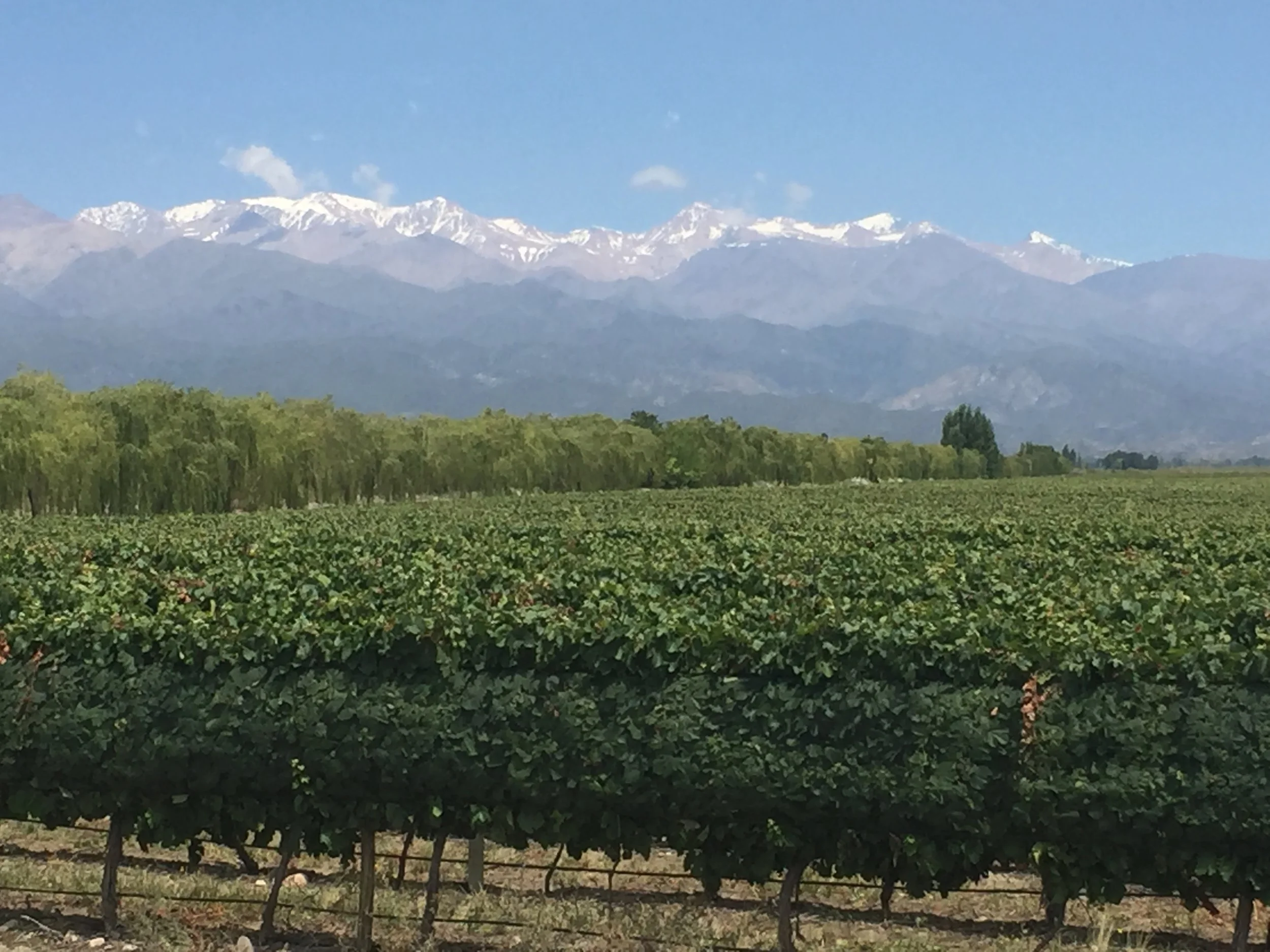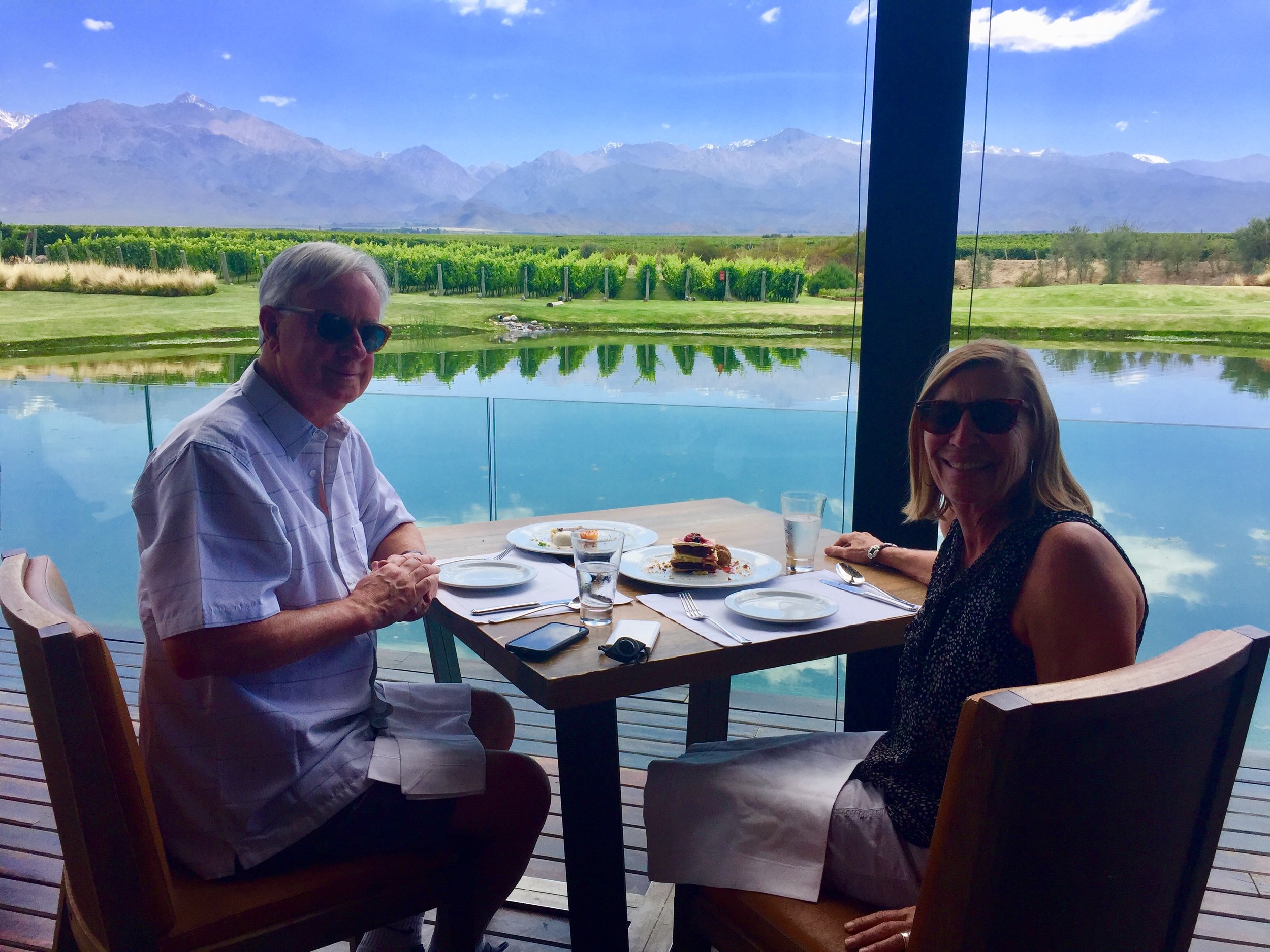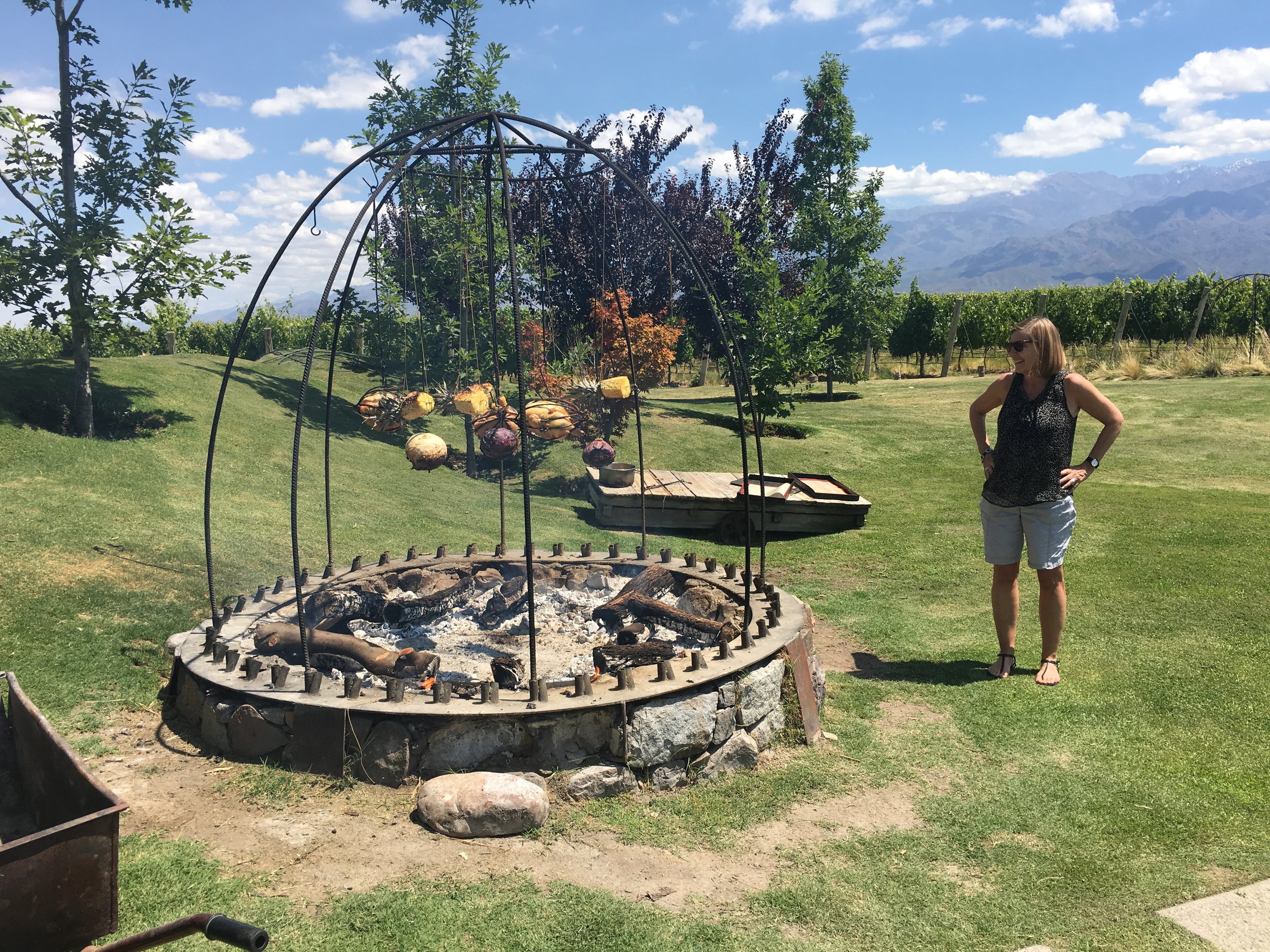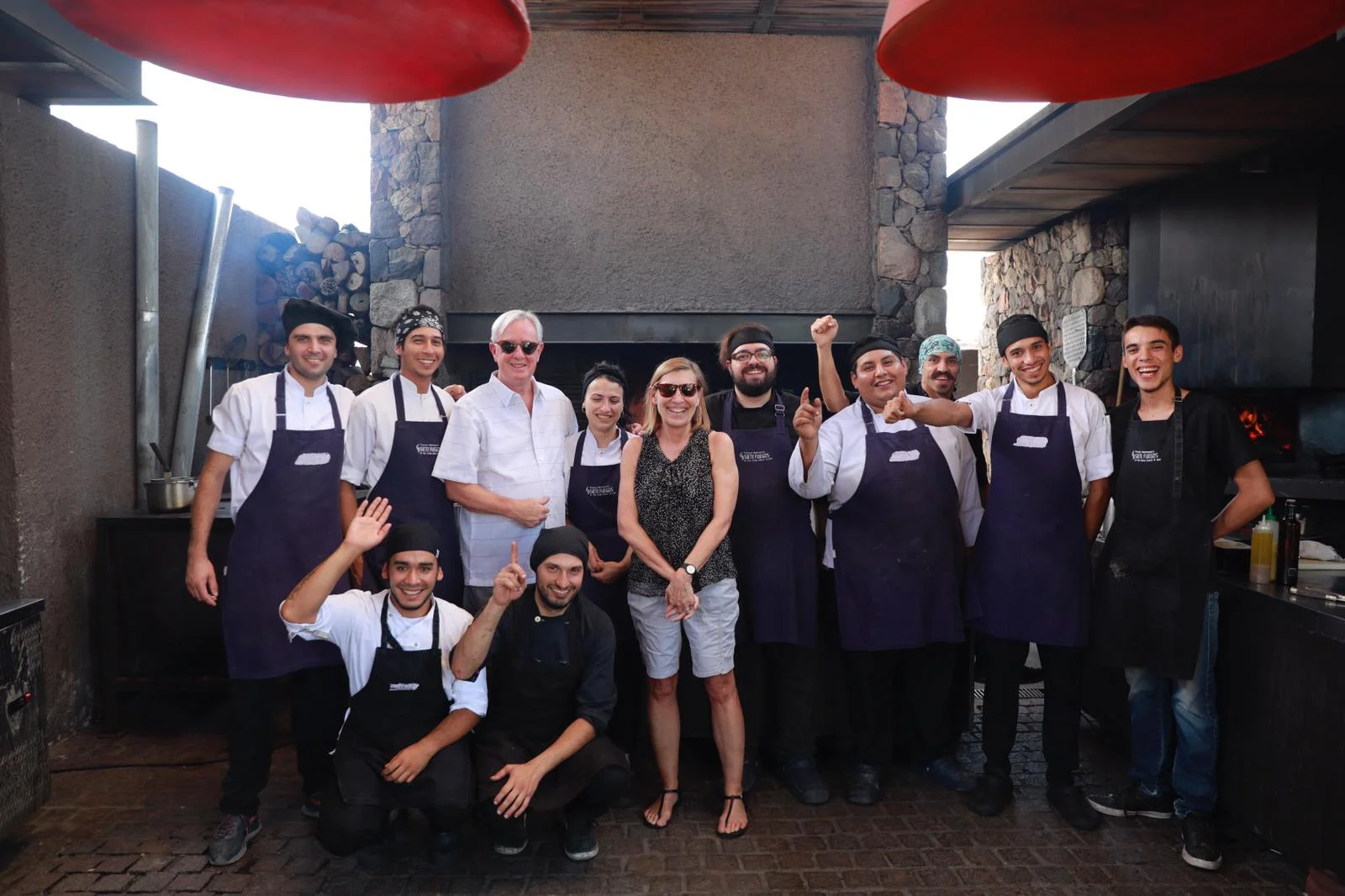Mendoza
Mendoza—Malbec country
Argentina is home to a vibrant wine industry, one that has now expanded well beyond the Malbec for which it is so well-known. We tasted lots of interesting blends, usually combining cabernet sauvignon and/or merlot, with occasional complements of petite verdot or syrah. There are also numerous unfamiliar varietals to try. Torrontes is a pleasant white that thrives in this high desert terroir. A red variety, called bonarda, is an acquired taste that I haven’t acquired as yet, though it is frequently found in very satisfying blends. Most of the larger wineries in the three wine-producing districts of the Mendoza Province are owned by Europeans. The smaller native winemakers there are determined to hold their own against these deep-pocketed global producers. Several excellent examples in the Uco Valley where we focused our wine tastings include Azul, Laureana Gomez, and Catena Zapata.
Despite having a rental car, we chose to follow a good friend’s advice and hired a driver for our full-day touring this sprawling wine district. It was the right move, saving us time and frustration, taking us to beautiful spots we might have missed and allowing us both to enjoy as much of the fabulous wine as we dared without running afoul of Argentina’s new zero-tolerance driving policy (i.e., any evidence of alcohol in the driver is a violation). We very much enjoyed our tasting at Bodega Azul, a delightful spot where the enthusiasm and pride of the hospitable crew outshone the wines themselves.
The highlight of the day was lunch at Siete Fuegos, the stunning outdoor restaurant of Frances Mallmann located at the Vines Resort & Spa in the heart of the Uco Valley. The food, the setting and the wine were all equally intoxicating. The three-course prix fixe meal was much more than we are used to at lunch, but each plate was cleaned. Mallmann, the Patagonian master of open fire and subterranean cooking made famous in the US by the Netflix show Chef’s Table, was not present that day, but his large team graciously showed us in detail how each item of our meal was prepared. We saw how the fire pit is fed with eucalyptus branches before the vegetables are prepared, then wrapped in cloth and buried for subterranean cooking. Whole chickens, pineapples and cabbages were hung at various heights from a trellis over a large open fire and carefully turned to achieve the proper amount of heat.
Regretfully, we were not able to find a time to visit El Enemigo, the Maipu bodega owned jointly by Adrianna Catena and Alejandro Vigil, who as head winemaker at Catena Zapata earned South America’s first 100-point ratings from Robert Parker. We did try several of their wines and found them wonderful. Not sure if any reached perfection, but from all we heard, the meals at their bodega were every bit as delicious as their wines. Something for our next trip!
An added pleasure of our day touring the Mendoza wine country was being entertained—and educated—by our driver, Ivan. We spoke of his country’s painful history of political dysfunction. Argentines are nevertheless a very proud and open people. I was surprised to learn from Ivan, and to see for myself the fields of derricks he pointed out, that Argentina is a substantial oil producer. Along with hydro generation provided by the Andes, it is once again nearly self-sufficient energy-wise.
The Argentine economy is similar to that of Chile: agriculture (lots of fruits and vegetables, plus meat and dairy), wine, tourism. Wine- and adventure-themed tourism are clearly growth industries here. The country has excellent air travel infrastructure, with modern airports and a growing field of airlines to compete with the long-dominant Aerolineas Argentina. LATAM, a One World Alliance member, offers service as does the global upstart low-fare line Norwegian.
We took six domestic flights on Aerolineas, a part of SkyTeam alliance, during our visit. All were on-time, the planes (all Boeing 737 800’s) were clean and comfortable, and the service was consistently good. One wish we left with is for options to fly directly between airports such as Mendoza and Bariloche, rather than having to return to BA to get anywhere from anywhere. We saw lots of Europeans and North Americans throughout our stay, but not many Asians. Our driver in Mendoza told us his clientele was about 40% each from US and Brazil, 20% from the rest of the world. That might be skewed by the fact that he works for a high-end US-owned hotel (the Park Hyatt Mendoza which I can heartily recommend.)
Inca Bridge
We declared our last day in Mendoza a wine-free period—at least until dinner. We left in the early morning and drove westward into the Andes, passing through yet more wine country and a number of small towns. Our goal was the base of Aconcagua, the highest peak in both the Southern and Western hemispheres. The nearly 23,000-foot mountain straddles the border with Chile, but the summit is on the Argentine side. Unlike the many climbers and trekkers we saw in Mendoza, we had no plans to scale the behemoth. We were content to see it and take the mandatory photos. We did stop and explore the Inca Bridge, a natural formation spanning the Mendoza river that the Incas used to traverse this high country. Today it is a mass of rock turned yellow by the sulfurous waters that descend from the Andes snow cap and sits beside a ramshackle array of stalls selling trinkets.
One of our favorite dinners of our trip was at a marvelous restaurant in Mendoza called Azafrán. Everything about it—the food, the cocktails, the wine, the atmosphere, the service—was top-notch. Our dinner of creative small plates such as trout carpaccio and lamb ravioli was perfectly balanced and proportioned. While there we met an adventuresome young woman from Austin who was traveling alone through Peru, Chile and Argentina during a four-month work sabbatical. She told us she had been treated very well and had encountered no uncomfortable interactions. Although Argentina was her favorite of the three countries, her favorite spot had been Torres de Paine in Chilean Patagonia. She said that after Argentina she may not be able to eat steak in Texas any more.






